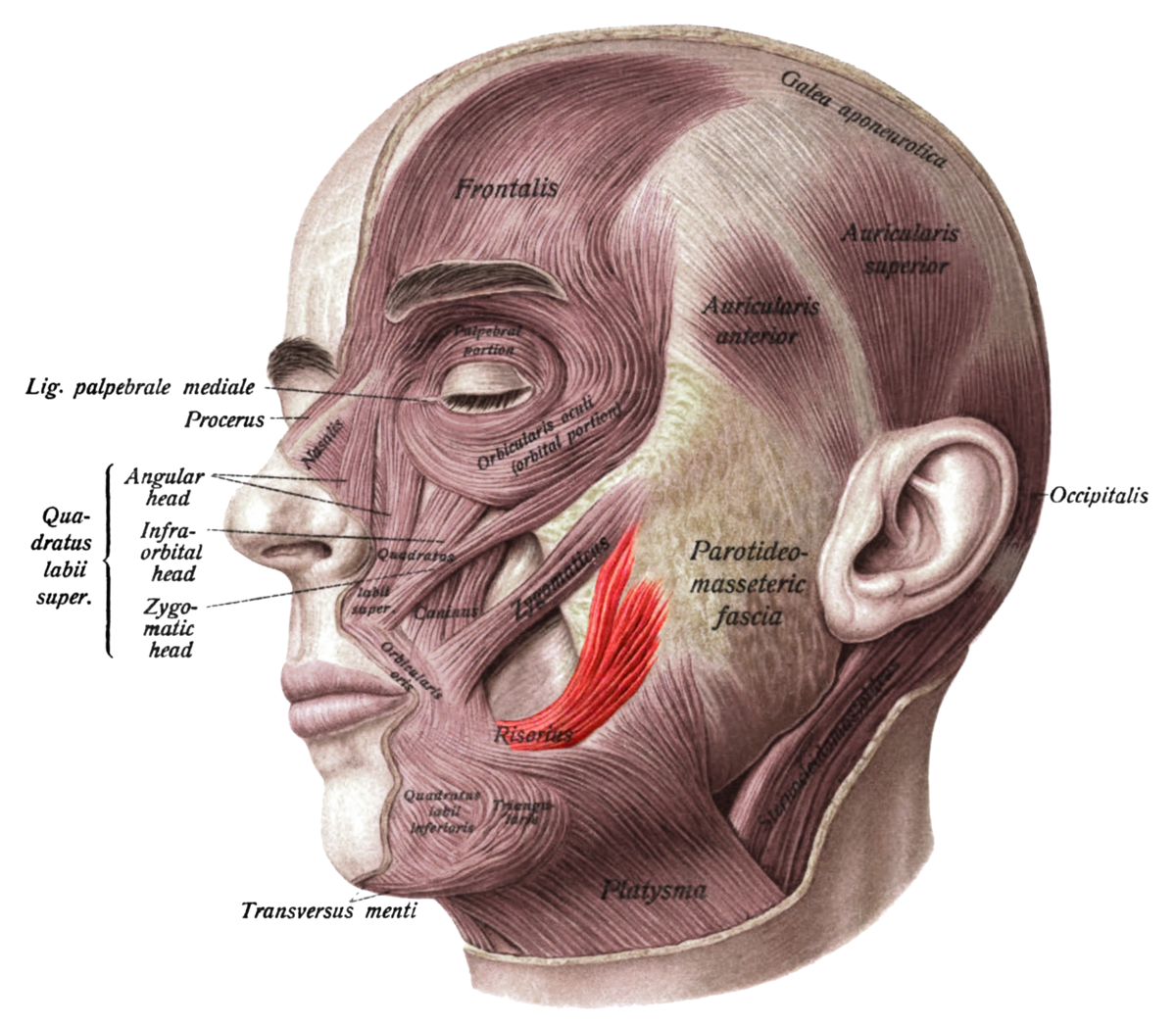Origin Parotid fascia Artery Facial artery | Insertion Modiolus Latin Musculus risorius | |
 | ||
Nerve Buccal branch of the facial nerve Actions Draws back angle of mouth | ||
The risorius is a muscle of facial expression which arises in the fascia over the parotid gland and, passing horizontally forward, superficial to the platysma, inserts onto the skin at the angle of the mouth. It is a narrow bundle of fibers, broadest at its origin, but varies much in its size and form.
Contents
Action
The risorius retracts the angle of the mouth to produce a smile, albeit an insincere-looking one that does not involve the skin around the eyes. Compare with a real smile, which raises the lips with the action of zygomaticus major and zygomaticus minor muscles and causes "crow's feet" around the eyes using the orbicularis oculi muscles.
Innervation
Like all muscles of facial expression, the risorius is innervated by the facial nerve (CN VII). The specific branch is debated, with some sources giving marginal mandibular branch of the facial nerve and others giving buccal branch of the facial nerve.
Unique to Hominines
It has been suggested that the risorius is only found in Homininae (African great apes and humans).
Individual differences
A study of 18 Caucasian cadavers found individual differences in the presence and bilateral symmetry of risorius muscles. Seven of these individuals (both men and women) clearly lacked the muscle; two were inconclusive; only four were conclusively symmetric.
